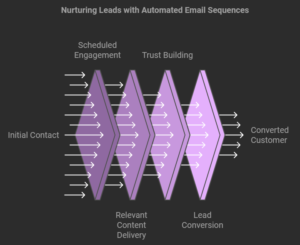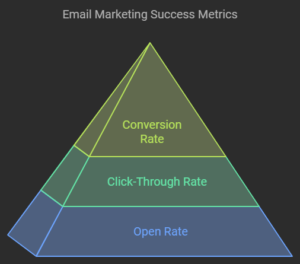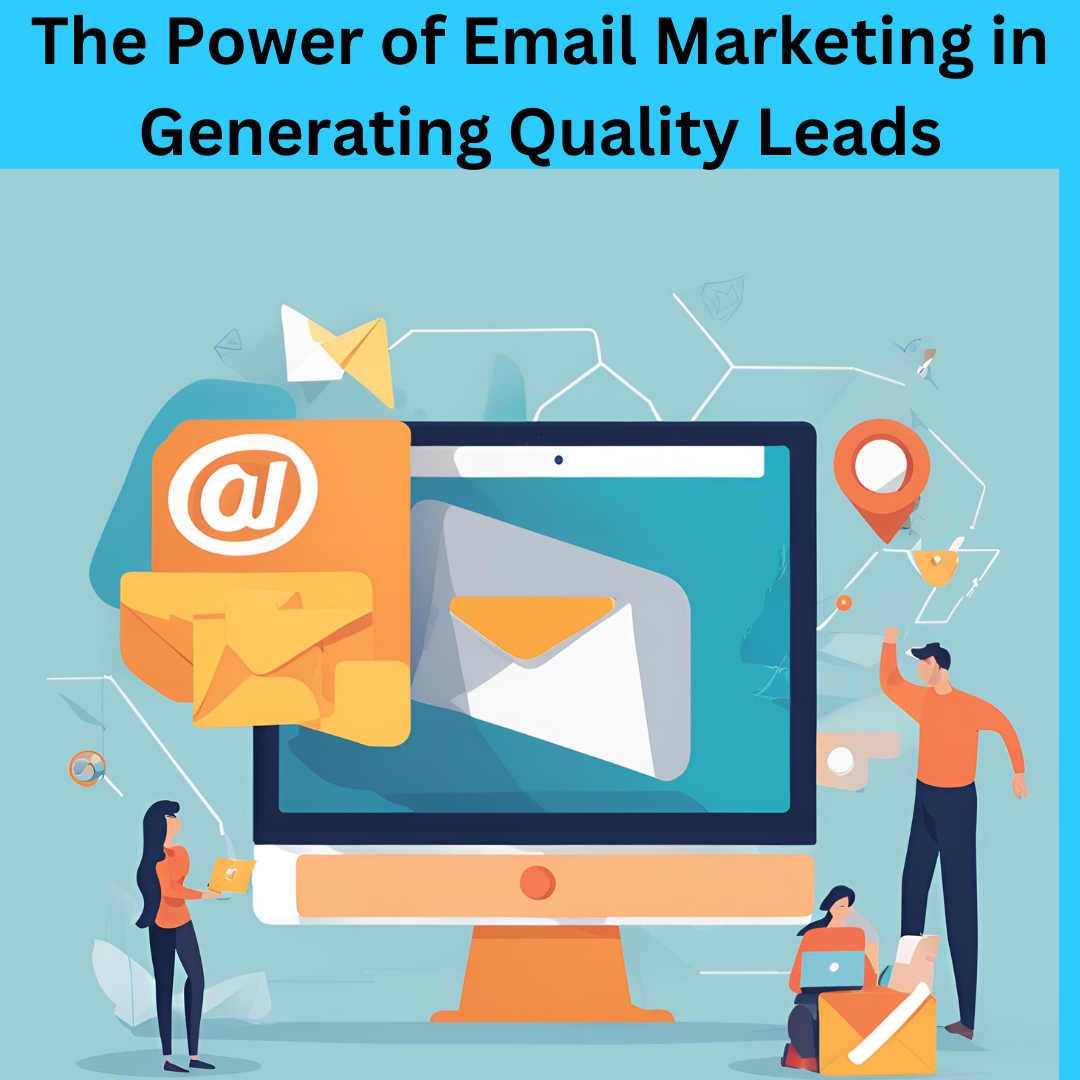
It has been a core digital marketing tool for much longer: direct and personal communication with prospects via e-mail. As a lead generation tool, it stands out among its peers, targeting people already interested in your brand much better precursor to conversion. By sending targeted content directly to the prospect’s inbox, businesses engage leads in a way that is personal and relevant, very important especially in a noisier digital world.
Building long-term relationships is one of the key strengths and value propositions of email marketing because using constant communication, businesses can educate leads, help to address their pain points gradually, and guide them down the funnel of sales. The most effective campaigns through email are built on value-adding topics, whether helpful tips, exclusive offers, or insightful content, thereby helping a person build trust and loyalty.
The statistics say it all: Email marketing has an impressive return on investment of $42 for every $1 spent, which is higher than most other marketing channels. More importantly, it has a 4,400% ROI, indicating efficiency in the conversion of leads to customers. In such statistics, it prove that email marketing indeed forms part of very effective tools, not only for generating quality leads but also in enhancing long-term relationships with a customer.
Why Email Marketing is a Powerful Lead Generation Tool?

Email marketing is one of the most effective lead-generation channels because it allows direct, personalized contact with customers. Not like any other communication channel, email will help tailor messages to various segments of your audience, thus making the communications more relevant and engaging. Personalization through name greetings or more customized content that speaks to interests will create a sense of connection and will increase the chances of leads interacting with your brand.
Another significant benefit of email marketing is cost-effectiveness. Against traditional advertising or paid digital campaigns, email marketing involves little investment but generates great returns. Businesses can send automated campaigns to a large audience, saving on labor and time costs. This scalability allows the technique to be apt for businesses small and large.
The high ROI bears witness to the power of email marketing. Email remains the best-performing marketing method with an average ROI of $42 for each $1 spent. Moreover, leads are nurtured through the sales funnel via email. Drip campaigns and targeted emails by businesses educate prospects about their pain points, answer their questions, and give them all kinds of helpful resources. Steadily engaged, this builds trust in your brands so that when they are ready to make a decision, it will be your brand.
Building a High-Quality Email List
A good email list is the starting point for successful marketing via e-mail. You are targeting the right people, and hence, the campaigns more resonate, leading to relevant engagement. Targeting interested people in your services or products raises the possibility of conversions and long-term relationship building. Generally, it refers to demographic knowledge, along with preferences and pain points, to apply an approach tailored to match the target audience’s needs.

Intrinsic to having a huge and active list is having it come in myriad shapes and forms. Paying visitors for subscribing by using lead magnets such as free e-books, guides, or even limited-time discounts gives them something worthwhile their time in return. Optimized landing pages with compelling calls to action will make joining your list easy for visitors. Social media promotions also drive traffic to sign-up forms, often when combined with engaging content and clear benefits for subscribers.
The quality of your email list has also to be maintained. Clean up your list from inactive or unengaged subscribers with frequency; this improves deliverability and makes sure you’re communicating with active leads. Segmentation further enhances list quality by grouping subscribers based on behavior, interests, or demographics. This allows a personal, relevant message in the contact that drives higher engagement and stronger results.
Crafting Effective Email Campaigns for Lead Generation
The success of an email campaign will be defined by its ability to capture attention and encourage action. Writing persuasive subject lines is the first step toward cutting through the noise in crowded inboxes. A subject line should be clear, concise, and intriguing in ways that preview the value of the email. Including the name of the recipient is definitely going to increase the open rate, and when dealing with pain points, this also really creates an action-oriented culture.

The copy of the email itself should be compelling and easy to read. The focus should be on the needs of the audience rather than all your business-type happenings. Use a conversational tone, break up text into short paragraphs, and use bullet points to draw out the key information. Avoid overwhelming the reader; keep only one primary message per email for clarity.
This makes engagement even better with personalization and dynamic content. E-mails tailored according to recipient behavior, preferences, or demographics make the content feel relevant and valuable. In this sense, dynamic elements like product recommendations or location-specific offers create a personalized experience, and lift up click-through rates and lead quality.
Nurturing Leads with Email Sequences
Automated email sequences, or drip campaigns, are an essential tool to nurture leads. Pre-scheduled emails will keep businesses constantly interacting with potential customers over the buyer’s journey. Relevance and timeliness of content will help your brand stay top-of-mind, building trust in that lead without feeling overwhelmed.

Add value. The essence of good email nurturing is adding value. Serving how-to guides, tutorials, or industry insights positions your brand as an authority. Case studies and success stories showcase real-world applications, presenting social proof that can build credibility. Customer testimonials amplify trust because they showcase how successful experiences have been had by previous clients.
The timing and frequency of sending follow-up emails are very critical to keeping the engagement without annoying the recipient. Start with a welcome email after a lead joins then successively email them in strategic segments days or weeks from each other. It must correspond with the proper stages of the buyer’s journey, such as even when he is aware of the product or at the decision stage. Do not send him too many emails; use analytics to measure the degree of his engagement with them. Properly timed, and thoughtfully crafted drip campaigns can make deeper connections between companies, leads, and eventually loyal customers.
Segmenting Your Email List for Maximum Impact
Segmentation helps you divide the email list into any demographic characteristic, interest, or behavior; segmentation will then inform you which of the subscribers will receive which content to improve interaction and conversion. Essentially, a segmented list builds relevant and valuable emails aimed at increasing open rates, click-through rates, and the overall success of a campaign.

The primary advantages can be described as personalizing content and offering relevance to different types of leads. To illustrate, newcomers will get a welcome series with information about your brand, while regular customers get special discounts or an update concerning a particular product.
.Behavioral triggers, such as abandoned carts or clicks on specific links, can also inform targeted messaging.
Segmentation can allow for the creation of very targeted campaigns that meet the interests and needs of the viewers precisely, thus ensuring an improvement in engagement even as it creates better relationships with leads, thereby improving results.
Analyzing and Measuring Email Campaign Success
Email metrics tracking and analysis are important to understanding campaign performance and where to make adjustments. This will mean measuring key metrics, such as your open rate, showing how good your subject lines are at piquing the subscriber’s interest, and measuring your click-through rate, which shows how interesting your message is as well as your CTAs.Conversion rates are particularly important, as they reveal how many recipients took the desired action, such as signing up for a webinar or making a purchase.

A/B testing is a very strong tool for optimizing email performance. For instance, you can test variations of subject lines, email copy, design elements, or CTAs to find out what works best for your audience. For example, you could test two subject lines-one with the name and another without it to see which one is opened more. Refine your approach over time by continuously ensuring that your campaigns are evolutionary.
Nothing beats campaign information for future campaign design. Identify which segments engaged the most, what kinds of content performed best, and at what times people opened emails. With this knowledge, it is possible to refine the segmentation used, optimize the timing, and compose the right kind of content. Leverage such insights for campaign consistency, with a high-performing campaign guaranteed to drive results and maximize ROI.
Conclusion
Email marketing has maintained a place in being one of the most effective tools for generating quality leads because of direct and customized communication and because of its enormous return on investment. Businesses can develop target email lists, design attractive campaigns, and use data to maximize performance to nurture leads into valued customers.
